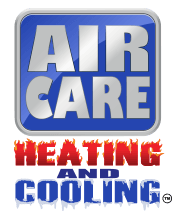HVAC Techs in Mint Hill, NC Share Important Information About Heater Safety Issues
Charlotte, United States - December 11, 2023 / Air Care Heating and Cooling /
Common Heating Hazards and Their Warning Signs
There’s nothing worse than having the heater quit working in the middle of a frigid winter night – or so it seems when one is in the middle of such an ordeal. But not all heater malfunctions are created equal. It’s bad enough to be stuck without heat while the icy chill creeps into the home through every crack it can find. But some heating problems go beyond discomfort and into the realm of danger, posing both immediate and long-term threats to the health and safety of everyone in the home.
So to help homeowners stay safe, healthy, and comfy this winter, this article will examine three of the most dangerous heating system issues homeowners can face, what causes them, and how to identify their warning signs.
Gas or Carbon Monoxide Leak
When it comes to oil or gas furnaces, the biggest concern is a gas leak or carbon monoxide leak. Fortunately, both are fairly rare but still occur under certain circumstances. A gas leak is usually the result of a faulty pilot light, loose pipe fitting, or damaged/corroded gas line, and can often be detected by the signature “rotten egg” smell that gas gives off.
On the other hand, carbon monoxide is completely odorless and invisible, and exposure to it can be deadly. A carbon monoxide leak from a heater is usually the result of a damaged exhaust flue, faulty pilot light, or cracked heat exchanger. Because it’s so difficult to detect to the naked senses, homeowners should install carbon monoxide detectors, particularly near gas appliances.
It’s also a good idea to be on the lookout for the symptoms of carbon monoxide poisoning, which include headaches, nausea, vomiting, fatigue, chest pain, shortness of breath, and confusion. If any of these symptoms arise, homeowners should leave the home and call a professional for heater repair immediately.
Mold In the Heater or Ductwork
 Another major threat to the home’s indoor air quality (and, therefore, to the health of its occupants) is mold. Mold growth generally only occurs where there is moisture, and the inside of an HVAC system is no stranger to moisture – part of its job is to remove water vapor from the air and convert it into condensation. Typically, the condensation drains away, but in some cases, it can linger inside the unit long enough to facilitate mold growth. The mold can then propagate and spread throughout the unit and into the air ducts as the spores take a free ride on the air moving through the unit.
Another major threat to the home’s indoor air quality (and, therefore, to the health of its occupants) is mold. Mold growth generally only occurs where there is moisture, and the inside of an HVAC system is no stranger to moisture – part of its job is to remove water vapor from the air and convert it into condensation. Typically, the condensation drains away, but in some cases, it can linger inside the unit long enough to facilitate mold growth. The mold can then propagate and spread throughout the unit and into the air ducts as the spores take a free ride on the air moving through the unit.
While not as dangerous as carbon monoxide, mold can significantly negatively impact the health of everyone in the home. Exposure to mold spores (particularly stachybotrys chartarum, commonly known as “black mold”) can cause respiratory irritation and allergy symptoms, such as coughing, sneezing, sinus congestion, and itchy eyes.
If anyone in the home experiences these symptoms, if the home smells musty or mildewy, or if there’s any sort of black splotchy substance on the air registers or the heater itself, homeowners would do well to have an HVAC expert inspect their system for mold. If mold is present, complete heater and air duct cleaning may be necessary to remove it.
The Furnace Is Overheating
 Overheating is one of the most common issues in heaters and furnaces and can pose various dangers in its own right. Overheating can cause the heat exchanger to crack (which may lead to a carbon monoxide leak), start a fire in the heater that may spread to the house, and severely damage the heater itself – not to mention drive up the energy bill.
Overheating is one of the most common issues in heaters and furnaces and can pose various dangers in its own right. Overheating can cause the heat exchanger to crack (which may lead to a carbon monoxide leak), start a fire in the heater that may spread to the house, and severely damage the heater itself – not to mention drive up the energy bill.
A dirty air filter often causes a heater or furnace overheating – as the air handler struggles to pull air through the filter media, heat can accumulate inside the unit rather than being distributed throughout the home. But overheating can also be caused by faulty internal components and thermostat issues, among other things.
Some signs of an overheating furnace or heater include short cycling (when the system only runs for a short time before shutting off), a loud humming noise coming from the unit, a burning smell coming from the air vents, or if the heater shuts down before the thermostat reaches the desired temperature. If homeowners notice these issues, they should turn the system off and call for heating repair at once – but in most cases, they can prevent overheating altogether by regularly changing the furnace filter (every 1-3 months) and scheduling professional heating maintenance at least once a year!
About Air Care Heating and Cooling
The family-owned Air Care Heating and Cooling has been the go-to heating and cooling company in Mint Hill since 2007. Their licensed, insured, and background-checked technicians always arrive on time in fully-stocked trucks, ready to resolve any issue quickly and efficiently. Air Care offers up-front pricing, financing, free estimates, a rewarding membership program, and 24/7 emergency service – so don’t hesitate to call them for heater repair in Mint Hill, NC!

Contact Information:
Air Care Heating and Cooling
11211 Allen Station Dr A
Charlotte, NC 28227
United States
James Brown
(704) 469-5833
https://aircarecharlotte.com/
Original Source: https://aircarecharlotte.com/press-releases


